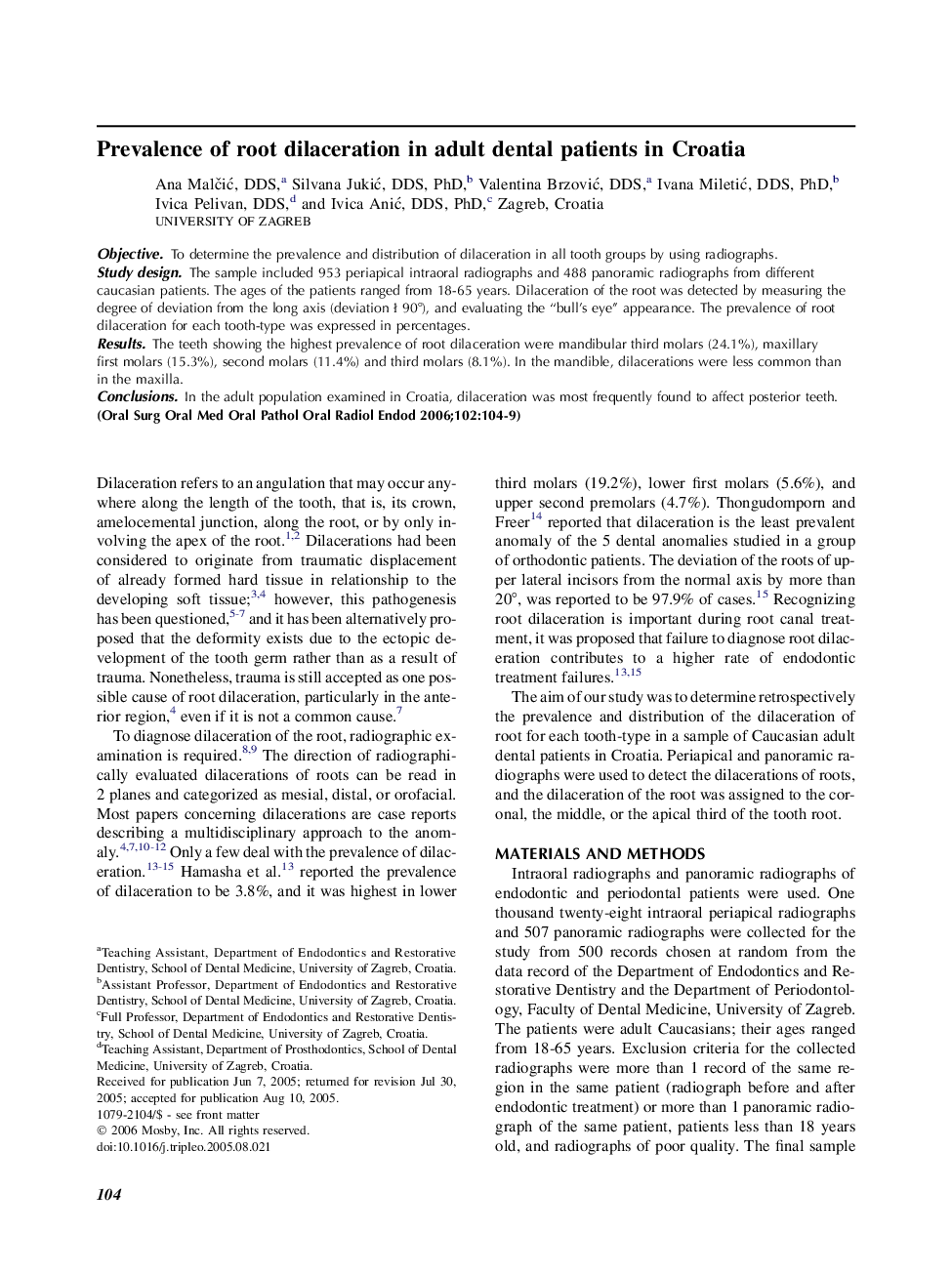| Article ID | Journal | Published Year | Pages | File Type |
|---|---|---|---|---|
| 3169855 | Oral Surgery, Oral Medicine, Oral Pathology, Oral Radiology, and Endodontology | 2006 | 6 Pages |
ObjectiveTo determine the prevalence and distribution of dilaceration in all tooth groups by using radiographs.Study designThe sample included 953 periapical intraoral radiographs and 488 panoramic radiographs from different caucasian patients. The ages of the patients ranged from 18-65 years. Dilaceration of the root was detected by measuring the degree of deviation from the long axis (deviation ł 90°), and evaluating the “bull’s eye” appearance. The prevalence of root dilaceration for each tooth-type was expressed in percentages.ResultsThe teeth showing the highest prevalence of root dilaceration were mandibular third molars (24.1%), maxillary first molars (15.3%), second molars (11.4%) and third molars (8.1%). In the mandible, dilacerations were less common than in the maxilla.ConclusionsIn the adult population examined in Croatia, dilaceration was most frequently found to affect posterior teeth.
